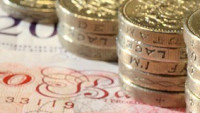 Stock markets in Europe and the US finished broadly higher on Friday.
Stock markets in Europe and the US finished broadly higher on Friday.
Investor confidence was running high as the improved trading relationship between the US and China encouraged buying. Last week, we had more clarity on the situation as US treasury secretary, Steven Mnuchin, and Larry Kudlow, an economic advisor to President Trump, both expressed positive sentiments about the most recent trade talks. More work has yet to be done, particularly in the area of intellectual property. No doubt President Trump is enjoying the rally in US stocks, as he likes to boast about their performance.
Overnight, equities in Asia jumped on the hopes that Beijing and Washington DC are near to agreeing a trade deal. It was reported that both sides are in the ‘final stages’ of completing a trade deal’ and that has boosted inventor confidence. The report claimed the Chinese government are considering cutting the tariffs on many goods that are imported from the US, and the US government are said to be contemplating lowering or removing tariffs on Chinese imports.
The US president met with North Korea’s Kim Jong-un last week, the meeting was cut short as the North Korean leader requested that all sanctions against the state be removed. It wasn’t a perfect ending to the summit, but the relationship the rouge state has with the rest of the world now is certainly better than it was a couple of years ago.
The US dollar was helped along by broadly positive data from the back end of last week. The US economy grew by 2.6% in the final-quarter of 2018, topping forecasts. The core PCE rate held steady at 1.9% and the University of Michigan consumer sentiment reading came in at 93.8, up from 91.2. The firmer US dollar sent gold below $1,300 for the first time since late January.
China negative manufacturing figures last week. The Caixin manufacturing PMI report fell to a three year low, while the official survey remained in negative territory, but was an improvement on the previous month. It is worth remembering that China celebrated the Lunar New Year last month, so the figures might not be the best reflection of the manufacturing industry.
Spanish, Italian, and German manufacturing sectors are all in contraction territory. The currency bloc has been muddling along for several months, and there is a risk more countries could join Italy in recession. On the bright side, the latest eurozone inflation CPI ticked up to 1.5%. The CPI report that strips out food and energy held steady at 1.2% – but at least demand is firm. The unemployment rate is at the joint lowest level in a decade.
The eurozone sentix investor confidence report will be released at 9.30am (UK time) and the consensus is for a reading of -3.1, which would be a slight improvement on February’s -3.7. At the same time, the UK construction PMI report will be announced, and dealers are anticipating 50.5, and that compares with the 50.6 reading in January.
EUR/USD – has been broadly pushing lower since early January, and if the negative move continues it might retest the 1.1216 area. Resistance might be found at 1.1400 or 1.1500.
GBP/USD – has been driving higher since early December, and if it holds above the 200-day moving average at 1.3000, it might retest the 1.3472 area. The 1.2775 area region might act as support.
EUR/GBP – while its holds below the 200-day moving average at 0.8857, its outlook is likely to be negative. 0.8500 might act as support. A rally might encounter resistance at 0.8700.
USD/JPY – has been on the rise since early January, and if the bullish move continues it might target the 113.70 area. A break below 109.55, might bring 108.50 into play.
_________________
Other Forex Forecasts on the site.













